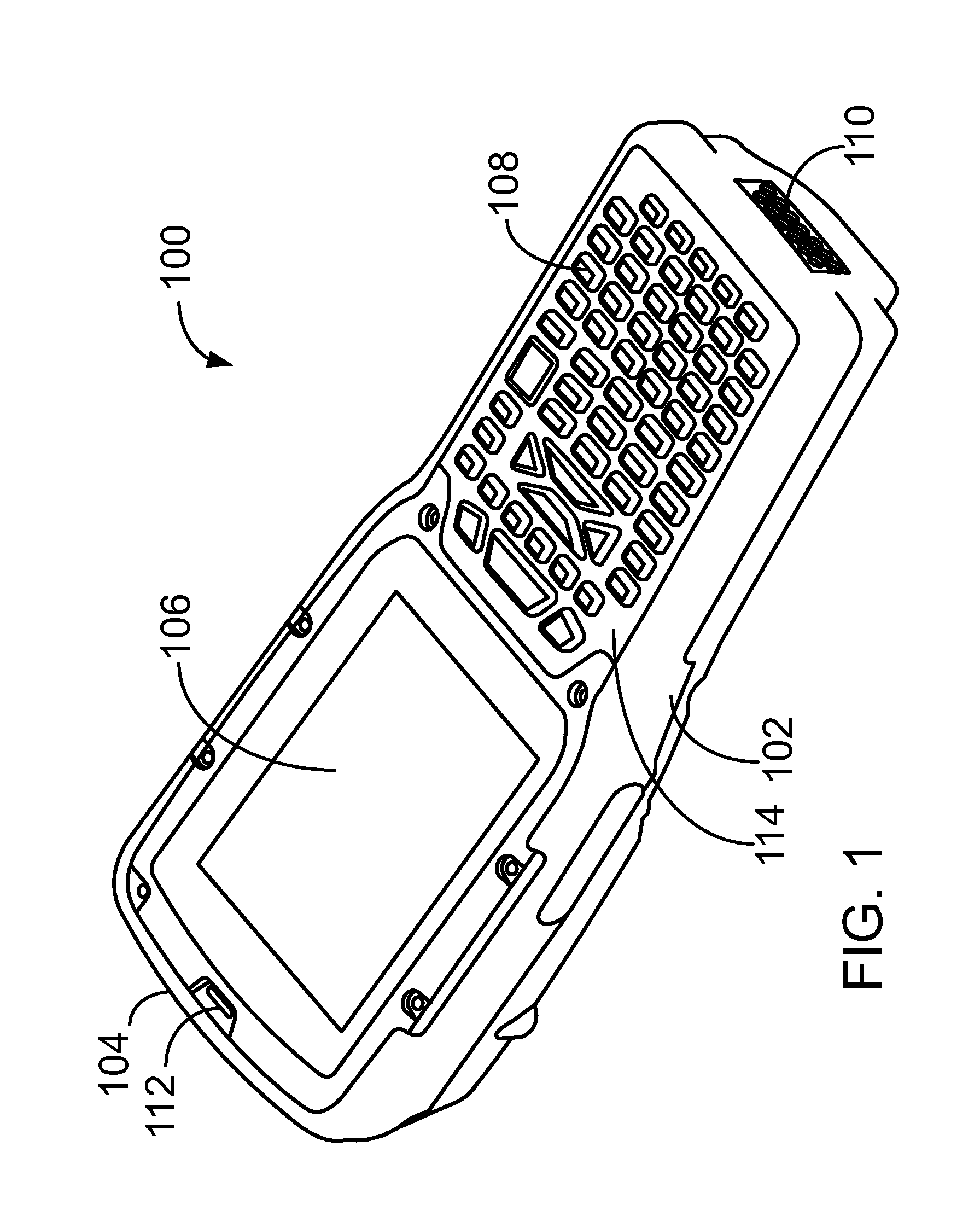Method and system for sharing a signal received by an antenna
a technology of antenna and signal, applied in the field of method and system for sharing a signal received by an antenna, can solve the problems of difficulty in maintaining an adequate signal-to-noise ratio during signal processing, cost is also an issue in the design of mobile communication devices,
- Summary
- Abstract
- Description
- Claims
- Application Information
AI Technical Summary
Benefits of technology
Problems solved by technology
Method used
Image
Examples
first embodiment
[0043]Referring now to FIG. 4, there is depicted a system 400 for sharing a GPS signal 402 received by the active GPS antenna 207. The active GPS antenna 207 includes an antenna 422 that is electrically coupled to the input of an amplifier package 404 and that is tuned to the frequency of the GPS signal 402, which in the present embodiment is 1.57542 GHz. The amplifier package 404 is composed of a low noise amplifier (LNA), the input and output of which are each electrically coupled to frequency filters. The amplifier package 404 can be purchased as an integrated circuit; for example, the Avago Technologies™ ALM-1712 front end module can be used. The amplifier package 404 outputs an amplified GPS signal, which is transmitted using a transmission line such as a coaxial cable 410. In the present embodiment, the amplifier package 404 amplifies the GPS signal by about 10 dB. DC power carried along the coaxial cable 410 is used to power the amplifier package 404 according to techniques k...
second embodiment
[0045]Referring now to FIG. 5, there is depicted the system 400 for sharing the GPS signal 402 received by the active GPS antenna 207. The embodiment of the system 400 depicted in FIG. 5 is substantially similar to the embodiment depicted in FIG. 4 with the following exceptions.
[0046]One difference between the embodiment of FIG. 4 and the embodiment of FIG. 5 is the use of matching networks 500, 501 between the antenna 422 and the input of the amplifier package 404 and between the output of the amplifier package 404 and the coaxial cable 410. The matching network 500 between the antenna 422 and the input of the amplifier package 404 is used to minimize or eliminate reflections of the GPS signal 402 from the input of the amplifier package 404 to the antenna 422, and is an LC matching circuit. The matching network 501 between the output of the amplifier package 400 and the input of the coaxial cable 410 is used to minimize or eliminate reflections of the amplified GPS signal 402 from ...
PUM
 Login to View More
Login to View More Abstract
Description
Claims
Application Information
 Login to View More
Login to View More - R&D
- Intellectual Property
- Life Sciences
- Materials
- Tech Scout
- Unparalleled Data Quality
- Higher Quality Content
- 60% Fewer Hallucinations
Browse by: Latest US Patents, China's latest patents, Technical Efficacy Thesaurus, Application Domain, Technology Topic, Popular Technical Reports.
© 2025 PatSnap. All rights reserved.Legal|Privacy policy|Modern Slavery Act Transparency Statement|Sitemap|About US| Contact US: help@patsnap.com



